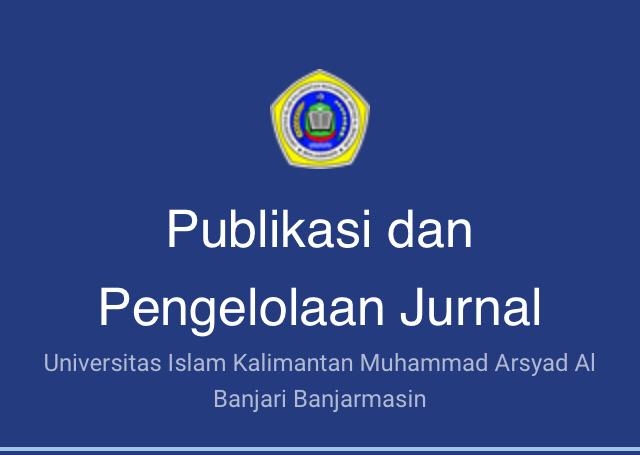PERAN KOHESIVITAS DALAM TIM OLAHRAGA UNTUK MEMPREDIKSI KEBERHASILAN KELOMPOK
(1) Fakultas Psikologi Universitas Muhammadiyah Banjarmasin
(*) Corresponding Author
Sari
The purpose of this article is to highlight cohesion research stemming from sports investigations. There is a lot of literature on cohesion to explain phenomena in team sports. Research conducted on physical activity on cohesion and other topics in group dynamics (eg, leadership, roles, and norms) has the potential to offer much of the extant group literature. In addition, a clear definition and conceptualization is needed in researching group cohesion on sports teams, considering that sports groups are different from other groups in social life. In the context of team sports, cohesion can be influenced and influenced by the group. Group cohesion can be a factor in team success, but it can also be a result of team performance. Therefore, future research may be able to clarify the direction of the relationship of group cohesion in sports team success
Keywords: The role of cohesiveness, predicting group success
Teks Lengkap:
PDFReferensi
Arrow, H., Poole, M. S., Henry, K. B., Wheelan, S., & Moreland, R. (2004). Time, change, and development: The temporal perspective on groups. Small Group Research, 35, 73–105.
Berg, R.C. & Landreth, G.L. (1990). Group Counseling: Concepts and Procedures. Munci: Accelerated Development Inc.
Bruner, M. W., Boardley, I., & Cote, J. (2014). Social identity and prosocial and antisocial behavior in youth sport. Psychology of Sport and Exercise, 15, 56–64.
Bruner, M. W., Eys, M. A., Wilson, K. S., & Cote, J. (2014). Group cohesion and positive youth development in team sport athletes. Sport, Exercise, and Performance Psychology, 3, 219–227.
Carron, A. V., Brawley, L. R., & Widmeyer, W. N. (1998). The measurement of cohesiveness in sport groups. In J. L. Duda (Ed.), Advances in sport and exercise psychology measurement.
Carron, A. V., Shapcott, K. M., & Burke, M. A. (2008). Group cohesion in sport and exercise: Past, present, and future. In M. Beauchamp & M. A. Eys (Eds.). Group dynamics advances in sport and exercise psychology: Contemporary themes. London: Routledge.
Carron, A.V., & Eys, M.A. (2012). Group dynamics in sport (4th ed.). Morgantown, WV: Fitness Information Technology.
Carron, A.V., Widmeyer, W.N., & Brawley, L.R. (1985). The development of an instrument to assess cohesion in sport teams: The Group Environment Questionnaire. Journal of Sport Psychology, 7, 244–266.
Casey‐Campbell, M., & Martens, M. L. (2009). Sticking it all together: A critical assessment of the group cohesion–performance literature. International Journal of Management Reviews, 11, 223–246.
Evans, C. R., & Dion, K. L. (2012). Group cohesion and performance: A meta-analysis. Small Group Research, 43(6), 690-701.
Eys, M. A., & Brawley, L. R. (2018). Reflections on cohesion research with sport and exercise groups. Social and Personality Psychology Compass, 12(4), e12379.
Eys, M., Ohlert, J., Evans, M. B., Wolf, S. A., Martin, L. J., Van Bussel, M., & Steins, C. (2015). Cohesion and performance for female and male sport teams. The Sport Psychologist, 29, 97–109.
Forsyth, D.R. (2010). Group Dynamic. Canada: Wadsworth.
Hardy, J., Eys, M. A., & Carron, A. V. (2005). Exploring the potential disadvantages of high cohesion in sports teams. Small Group Research, 36, 166–187.
Hasan, Z. (2018). Indosport. https://www.indosport.com/sepakbola/20181127/prestasi-timnas-jeblok-pemerintah-nilai-ada-yang-salah-di-pssi
Irving, P.G., & Montes, S.D. (2009). Met expectations: The effects of expected and delivered inducements on employee satisfaction. Journal of Occupational and Organizational Psychology, 82, 431–451.
Lawler, E.J., & Yoon, J. (1996). Commitment in exchange relations: Test of a theory of relational cohesion. American Sociological Review, 89–108.
Lawler, E.J., Thye, S.R., & Yoon, J. (2000). Emotion and group cohesion in productive exchange. American Journal of Sociology, 106, 616–657.
Martin, L. J., Carron, A. V., & Burke, S. M. (2009). Team building interventions in sport: A metaanalysis. Sport and Exercise Psychology Review, 5, 3–18.
McEwan, D., & Beauchamp, M. R. (2014). Teamwork in sport: A theoretical and integrative review. International Review of Sport and Exercise Psychology, 7, 229–250.
Montes, S.D., & Irving, P.G. (2008). Disentangling the effects of promised and delivered inducements: Relational and transactional contract elements and the mediating role of trust. Journal of Applied Psychology, 93, 1367–1381.
Rovio, E., Eskola, J., Kozub, S. A., Duda, J. L., & Lintunen, T. (2009). Can high group cohesion be harmful? A case study of a junior ice‐hockey team. Small Group Research, 2009, 421–435.
Salas, E., Grossman, R., Hughes, A. M., & Coultas, C. W. (2015). Measuring team cohesion: Observations from the science. Human Factors, 57, 365–374.
Smith, E. R., & Mackie, D. M. (2015). Dynamics of group‐based emotions: Insights from intergroup emotions theory. Emotion Review, 7, 349–354.
Tamminen, K. A., Palmateer, T. M., Denton, M., Sabiston, C., Crocker, P. R. E., Eys, M., & Smith, B. (2016). Exploring emotions as social phenomena among Canadian varsity athletes. Psychology of Sport and Exercise, 27, 28–38.
Taylor, S.E., Peplau, L.A., & Sears, D.O. (2006). Social Psychhology 12 Edition. University of Michigan: Pearson/Prentice Hall.
Utama, A. (2018). BBC News Indonesia. https://www.bbc.com/indonesia/indonesia-46388037
DOI: http://dx.doi.org/10.31602/jt.v4i1.7359
Refbacks
- Saat ini tidak ada refbacks.
Jurnal Terapung : Ilmu - Ilmu Sosial is licensed under Attribution-ShareAlike 4.0 International










